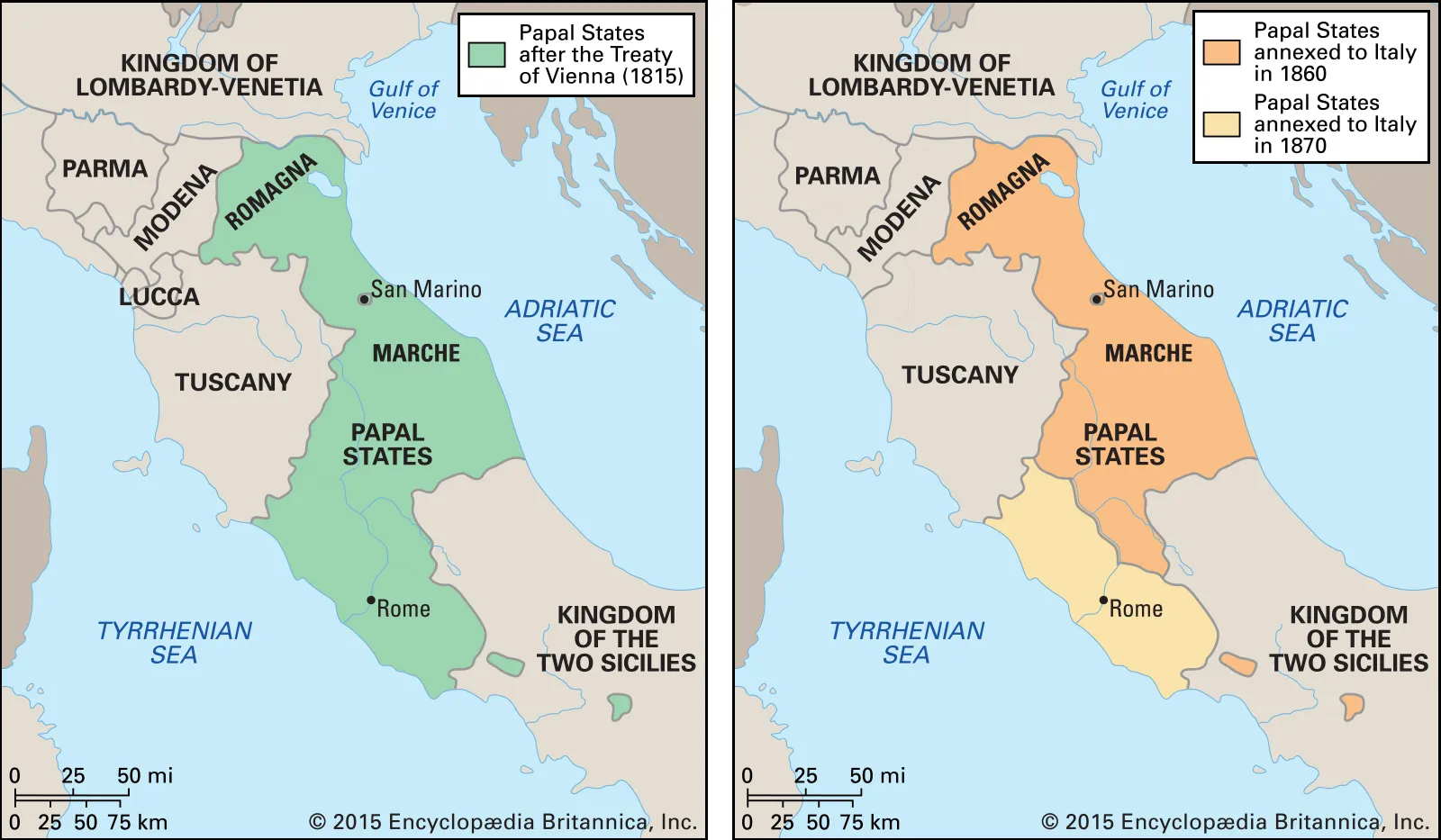In this blog post I intend to briefly explain some interesting historical facts about the Roman Curia. I will first discuss the Lateran Treaty which influenced the Roman Curia’s temporal power. I will then discuss how the definition of the Roman Curia shifted throughout history.
The Lateran Treaty
It was one of the features within the Lateran Pacts between the Kingdom of Italy and the Holy See. In 1929 , Re Vittorio Emanuele III of Italy and the Holy See, reached this agreement. The Pope at the time was Pius XI. Its purpose was to settle the Roman Question (i.e., the temporal power of the pope over civil territory in Italy). Some of the things discussed were:
- the maps of the territory of the Vatican City State,
- exemption of taxes related to buildings found in Italy which belonged to the Vatican City State nonetheless,
- the maps of buildings which did not benefit from the extraterritorial privilege,
- a financial definitive compensation by Italy to the Holy See related to the Risorgimento, which resulted in property and territory loss,
- a concordat which regulated the Vatican City State and the Italian State relations.
The territory of the Vatican City State became smaller after the signing of treaties. The Papal States were more than just a part of Rome. The maps below illustrate how the gradual loss of the Papal States took place up until 1870. As one may notice, it took almost sixty years until the Lateran Treaty took place.
The Shift in Definition of ‘Roman Curia’
It is fascinating that the word ‘Roman Curia’ has its roots in the division of the people and patricians of Rome, mainly the Ramnenses, Tatienses, and Luceres, which formed one third of Rome’s territory and thus, their families/tribes known as curiae. According to tradition, Romulus the founder of Rome founded these three divisions, consisting of ten families each.
Definition of ‘Curia’
The understanding of the word ‘curia’ shifted from the division of these territories (which were mainly political and religious divisions) to ‘meeting place’ of these same people known as the Curiales, with the Curia Maximus as their head. Eventually, these curiae were the places where senators met for administrative purposes, or other kinds of meetings.
Such definition of curia as an administrative body or ‘court’ continued through the medieval times, both secularly and ecclesiastically. We find notions like curia regis from the medieval period, referring to a king’s court. In France, this developed into Le Conseil du Roi, and in England it developed into the ‘Parliament’. Within the Vatican City State it developed into the ‘Roman Curia’. The word ‘Roman’ in Roman Curia has nothing to do with Rome as such. The place of the Roman Curia can be anywhere as long as it is where the pope is (i.e., ubi Pontifex, ibi Roma).
The Understanding of the Roman Curia Initially vis-à-vis Today.
Initially, the Roman Curia consisted of the Papal Court and all those working within the Vatican City State. Today, the Church defines it a little differently. As explained in Pastor Bonus. The focus of the Roman Curia is more on the unification of the universal Church. The Roman Curia is the dicasteries and institutes that assist the pope in daily achieving the Church’s mission worldwide.
In the first half of 2022, Pope Francis abrogated Pastor Bonus by the apostolic constitution Praedicate Evangelium. This document reorganised the structure of the Roman Curia. Not only did it restructure the dicasteries but it also emphasises the main goal of the Roman Curia. It is to be at the service of both the pope and the bishops according too their needs.




0 Comments